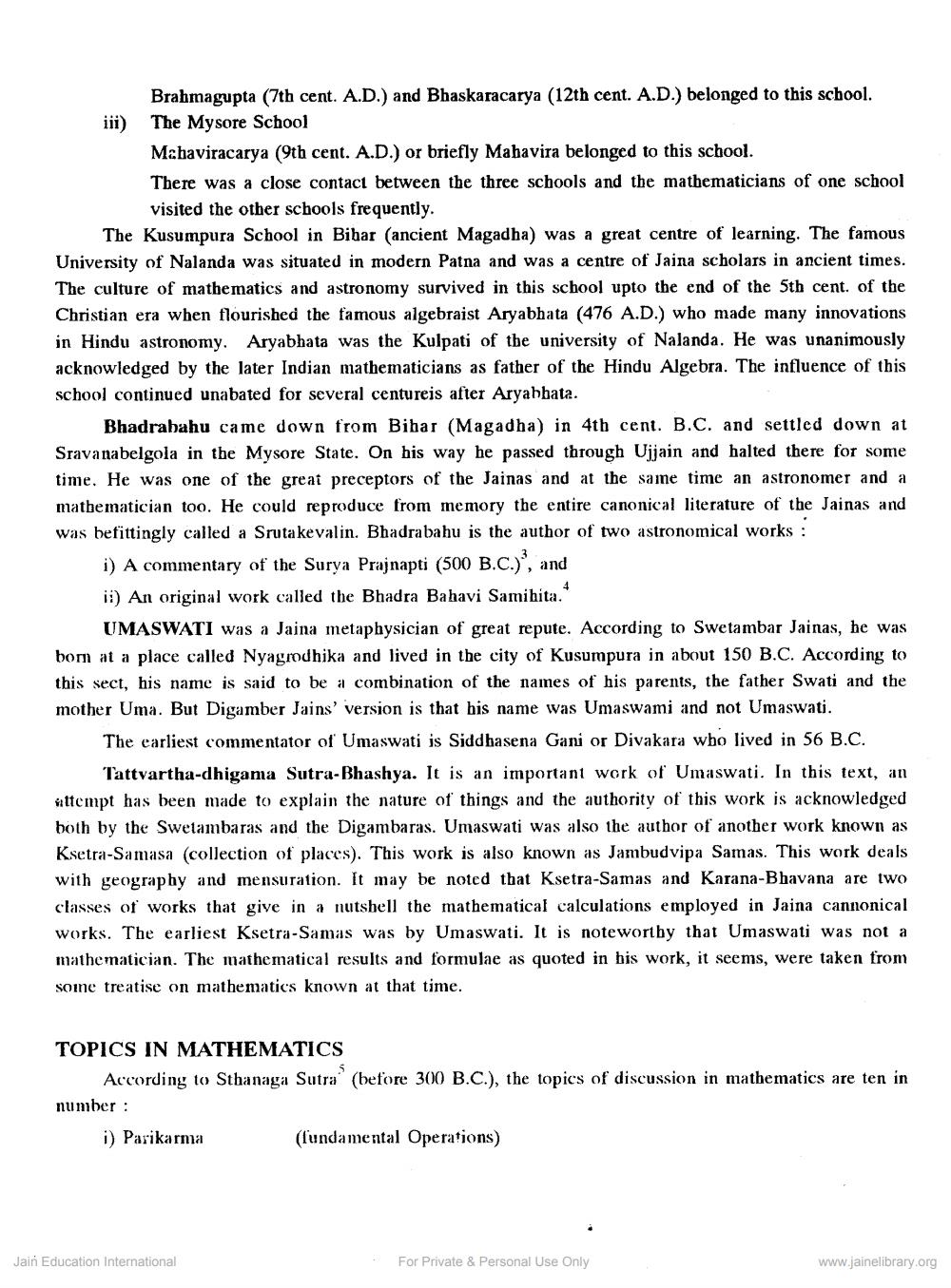________________
Brahmagupta (7th cent. A.D.) and Bhaskaracarya (12th cent. A.D.) belonged to this school. iii) The Mysore School
Mahaviracarya (9th cent. A.D.) or briefly Mahavira belonged to this school. There was a close contact between the three schools and the mathematicians of one school
visited the other schools frequently. The Kusumpura School in Bihar (ancient Magadha) was a great centre of learning. The famous University of Nalanda was situated in modern Patna and was a centre of Jaina scholars in ancient times. The culture of mathematics and astronomy survived in this school upto the end of the 5th cent. of the Christian era when flourished the famous algebraist Aryabhata (476 A.D.) who made many innovations in Hindu astronomy. Aryabhata was the Kulpati of the university of Nalanda. He was unanimously acknowledged by the later Indian mathematicians as father of the Hindu Algebra. The influence of this school continued unabated for several centureis after Aryabbata.
Bhadrabahu came down from Bihar (Magadha) in 4th cent. B.C. and settled down at Sravanabelgola in the Mysore State. On his way he passed through Ujjain and halted there for some time. He was one of the great preceptors of the Jainas and at the same time an astronomer and a mathematician too. He could reproduce from memory the entire canonical literature of the Jainas and was befittingly called a Sruta kevalin. Bhadrabahu is the author of two astronomical works :
i) A commentary of the Surya Prajnapti (500 B.C.), and ii) An original work called the Bhadra Bahavi Samihita."
UMASWATI was a Jaina metaphysician of great repute. According to Swetambar Jainas, he was born at a place called Nyagrodhika and lived in the city of Kusumpura in about 150 B.C. According to this sect, his name is said to be a combination of the names of his parents, the father Swati and the mother Uma. But Digamber Jains' version is that bis name was Umaswami and not Umaswati.
The earliest commentator of Umaswati is Siddhasena Gani or Divakara who lived in 56 B.C.
Tattvartha-dhigama Sutra-Bhashya. It is an important work of Umaswati. In this text, an attempt has been made to explain the nature of things and the authority of this work is acknowledged both by the Swetambaras and the Digambaras. Umaswati was also the author of another work known as Ksetra-Samasa (collection of places). This work is also known as Jambudvipa Samas. This work deals with geography and mensuration. It may be noted that Ksetra-Samas and Karana-Bhavana are two classes of works that give in a nutshell the mathematical calculations employed in Jaina cannonical works. The earliest Ksetra-Samas was by Umaswati. It is noteworthy that Umaswati was not a mathematician. The mathematical results and formulae as quoted in his work, it seems, were taken from some treatise on mathematics known at that time.
TOPICS IN MATHEMATICS
According to Sthanaga Sutra' (before 300 B.C.), the topics of discussion in mathematics are ten in number : i) Parikarma
(fundamental Operations)
Jain Education International
For Private & Personal Use Only
www.jainelibrary.org




